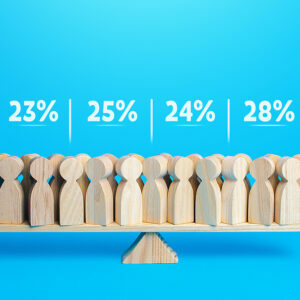Bad polling has plagued American politics since 2016.
Over and over, pollsters ask the wrong questions of the wrong people, who are too eager to give their own wrong answers. Then, pollsters apply the wrong fix to make the numbers look less wrong. At the same time, the mainstream media is all too willing to lap up flawed results if it means an easy story that supports a certain narrative or drives clicks.
Over the last four election cycles, we’ve seen how bad pollsters have repeatedly messed up while journalists, pundits and political consultants have put too much stock into flawed findings — because they reinforced their pre-existing bias. It’s not that polling can’t be done well by experienced professionals; it can be. But it generally isn’t. And Republicans are paying the price.
In the 2022 midterms, poll after poll predicted a “red wave” that never materialized, overstating Republican gains and underestimating Democrats’ stubborn resilience. Heading into the 2024 election, Republicans must learn their lesson.
The solution to America’s polling problem isn’t more bad polling; it is “anti-polling.” Instead of surveying small groups at a particular moment, we must evolve to monitor the actual behaviors of large populations over time — what they say and do, without being asked or even aware they are being monitored.
Polling involves pulling a small data set to create a general population that can answer specific questions. For example, the Harvard CAPS-Harris Poll recently asked registered voters for their preference between Florida governor Ron DeSantis and former president Donald Trump, using a national online survey that applied a certain amount of undisclosed “weighting” to those preferences. But registered voters are not likely voters or likely primary voters, and national polls on a small scale provide a meaningless snapshot that cannot possibly represent public sentiment. It may be a good story for those who benefit from intra-party conflict, but that isn’t the same as accuracy.
And online polling is even worse. It is little more than activist clickbait relying on oversampling people who want to express their outlier preferences rather than focusing on typical voters who are not necessarily interested in polls.
Ask yourself: How often do most American voters answer polling questions? When was the last time you did it?
Most polling consistently fails America because it is poorly designed and unrepresentative, yet too many Americans blindly put their faith in it. It makes no sense for people to distrust the mainstream media at a historic rate, only to unconditionally trust the polls that news outlets churn out. When tracked by activists masquerading as journalists, public opinion is too intertwined with narrative and bias to be trustworthy. The last four elections prove it.
That’s why the future is anti-polling — measuring public sentiment through actual observational analysis without the biases and errors associated with traditional polling. Measuring public opinion shouldn’t be hampered by questioner bias or fall prey to data selection bias. Nor does it mean trusting biased news outlets that frequently make mistakes.
With each passing poll, journalists gain opportunities to write sensational stories and twist the facts to promote their own ideological spin. But none of that is based in reality. One headline may “show” DeSantis beating Trump in the 2024 Republican primaries, only for the Florida governor to “lose” one week later. If polling were accurate, it would generate replicable results, but it doesn’t — because it isn’t.
So how does anti-polling work? Rather than chasing after tiny segments of Americans to ask specific, often loaded questions, anti-polling looks at large groups of people, passively monitoring what they do and say to get answers. Since May 2022, Ready for Ron has used Impact Social to observe and monitor 40,000 swing voters across America — identified by their actual social media posts. The clear message from that focus group is consistent: DeSantis trends slightly above President Biden with swing voters, and those same swing voters have largely abandoned Trump. Trump supporters now amount to a very loyal, very loud, but ultimately very limited core audience, even with the recently revealed Twitter bot networks artificially inflating “support” for him.
Using third-party data analysis from Eyesover, we can confirm that, while there are almost always more social media posts about Trump, that is because his supporters — bots or not — are simply more likely to post and more frequently. They are louder, not larger, and limited to a slowly shrinking core audience.
We’re not talking about one or two polls. The research is bolstered by other data — the hallmark of accuracy. In one mammoth academic study of nearly 20 million home IP addresses over nine months in 2021, running the entire gamut of political worldviews and measuring billions of organic actions overall, we clearly see the “Trump Prison.” This is a sliver of the electorate (17 percent to 22 percent) that doesn’t grow but from which his former supporters slowly get paroled. The Trump Prison doesn’t get larger; even artificial support does not change that.
Most traditional polling fails to produce consistent, replicable or reliable results. Anti-polling is the opposite, consistently telling us a clear story over time.
Heading into the 2024 election, here’s the long story short: The best chance for Republicans to win back the White House is Ron DeSantis. Don’t believe fake polls that suggest otherwise.





